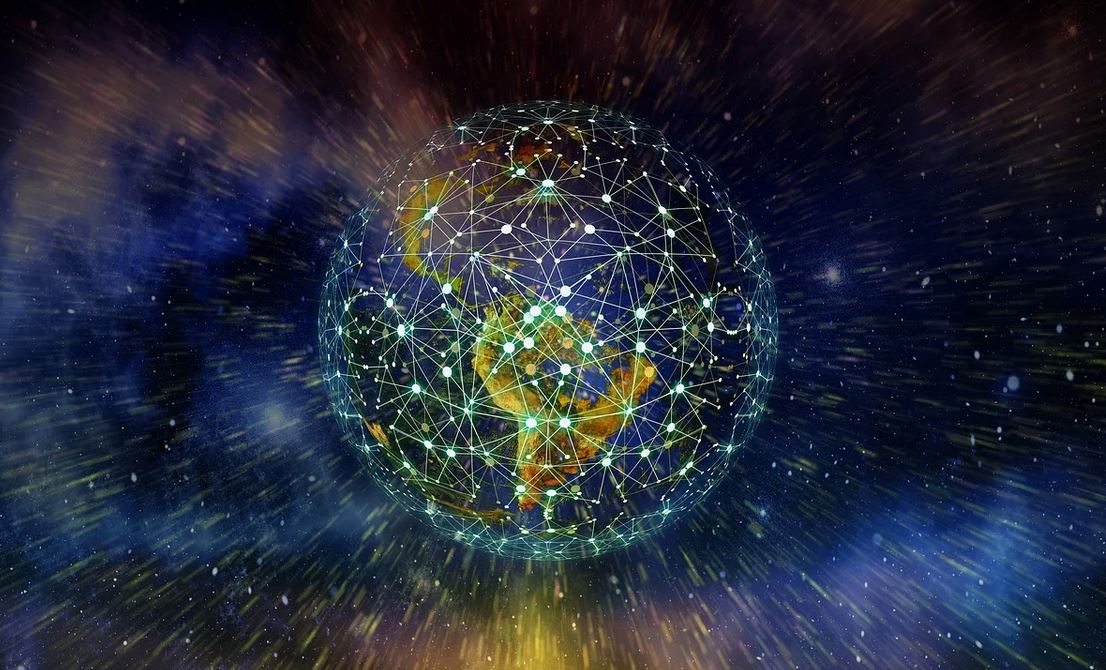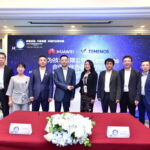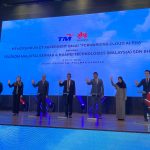Huawei’s Global Cloud Index (GCI) began in 2014 to provide countries and industries with authoritative recommendations for digital transformation. A new report is issued every year, since then.
The company released the below responses, to the questions that Enterprise IT News has about their annual GCI report.
EITN: Can you share about why the GCI report started?
Huawei: Nations around the world recognize that the era of the digital economy has arrived, and if they don’t embrace digitalization and the opportunities it presents, they will miss out on the growth that digital economies make possible. For each country, the key to creating these opportunities is understanding the pattern of global digital development and identifying where their own digital economies are lagging.
Huawei continually researches how ICT innovations and applications can help national economies grow and we conduct open research into the digital economy with top universities, think tanks, and industry associations on an ongoing basis.
EITN: What are the 5 stages of industry digital transformation and what do they mean?
Huawei: For the first time in a GCI report, the 2020 release proposes five key stages for the digital transformation of economic sectors. These five stages represent orders of productivity, which in turn correlate to ICT infrastructure build out and maturity.
- Stage 1:Task efficiency. Focus is placed on tracking the completion of individual tasks through basic connectivity and more efficient communication.
- Stage 2:Function efficiency. Computerized or automated functions enabled by ICT make it possible to handle multiple tasks simultaneously and share information more efficiently.
- Stage 3:System efficiency. More focus is put on the digitization of core system functions for efficient operations. Enterprises in this stage will have stronger demand for connectivity and cloud services.
- Stage 4:Organizational efficiency and agility. Enterprise processes are digitalised, enterprise applications are migrated to the cloud, and all systems are effectively integrated. In addition, high-coverage networks, wide adoption of cloud-based applications, and AI and IoT deployment contribute to real-time data analysis and insights.
- Stage 5:Ecosystem efficiency and resilience. The entire ecosystem is digitalized, able to quickly respond to market changes, and can support the automatic coordination and cross-sector collaboration of stakeholders. Representative technologies such as 5G, IoT, and robotics present new opportunities for the emergence of new business models, working methods, and products throughout the digitalization process.
EITN: What are the benefits of digital transformation for an economy?
Huawei: The rapid application of digital technologies in the economy has produced wide-ranging benefits. It’s clear that the digital economy is an increasingly important part of national economies – a new driving force of economic development. Many nations’ digital economies are in fact growing faster than their traditional economies. We estimate that the digital economy will be worth US$23 trillion by 2025.
The digital transformation of economic sectors will help economies develop higher-order productivity to spur economic recovery, future competitiveness, and greater resilience to supply chain shocks.
Currently, nations with more mature digital infrastructure are better positioned to minimize the economic impact of the pandemic, recover faster, and ensure the continuity of their transformation into higher-order productivity models.
EITN: Vietnam and Peru were cited as economies that managed to increase e-commerce expenditure and raise their GDP. From your observations and research, how have they managed to do this?
Huawei: The GCI identifies a correlation between ICT infrastructure build out and an increase in GDP, as well as innovation capabilities and competitiveness.
Over the past six years, Vietnam has seen solid improvements in fiber coverage, mobile and fixed broadband subscriptions, international internet bandwidth, and cloud migration. Over the same timeframe, Peru has seen a significant increase in mobile broadband subscriptions, smartphone penetration, and cloud investment and migration rates.
Both nations should continue this momentum and maintain ICT investment to boost GDP while transitioning into digital economies.
EITN: Do you see evidence that suggest the coronavirus pandemic has accelerated connectivity infrastructure building, take up and affordability?
Huawei: The COVID-19 pandemic has forced us into a new normal where many aspects of our social and working lives are likely to change permanently. One of those changes is the acceleration of the role that ICT plays in our society. Digital infrastructure through mobile and fixed broadband has also proven crucial to supporting work and home life, which for many people has enabled greater continuity than would have been otherwise possible.
As mentioned in GCI 2020, nations with strong digital infrastructure have generally shown greater resilience to the pandemic. They can ensure business continuity to a greater extent because they’re in a better position to take measures such as transitioning to online business models, automating business processes, and implementing work from home models.
New technologies have also helped better protect healthcare workers and make their work much more effective. 5G, big data, and AI, for example, have enabled new approaches such as remote consultation, mobile ward rounds, and infrared body-temperature monitoring.
While the strength of the global economic recovery remains uncertain, we are certain that now is an ideal opportunity for governments to renew and upgrade national infrastructure. In order to maximize digital returns, governments will also need to have the very best policy and regulatory environments in place.
A right strategy with continuous ICT investments to facilitate the digital transformation of enterprises and industries will increase productivity, set the stage for economic recovery, and build-in future resilience to economic shocks.
As a global technology leader, Huawei’s mission and vision is to bring digital to every person, home and organization for a fully connected, intelligent world.
To this end, we focus on driving ubiquitous connectivity and promoting equal access to networks. We are committed to extending the reach of cloud, artificial intelligence, and superior computing power, as well as building digital platforms that can help industries digitalize.
EITN: Do you see evidence that all these infrastructure building is benefitting rural areas and narrowing digital gaps within countries?
Huawei: The digital divide still exists, in both developed and developing economies and in urban and rural communities. In fact, around half of the world’s population are still not connected to the Internet. We believe that this needs to change — we’re committed to reaching as many people as possible with technology, so that no one is left behind in the digital world.
The digital divide is also a bigger issue than just a lack of digital infrastructure and connectivity. Many people lack the digital skills to benefit from connectivity, applications, and devices. And many communities that could really benefit from technology are underserved, for example, remote and rural areas, people with disabilities, the elderly, and girls and women
With our partners, we’re committed to not just expanding connectivity, but also to implementing projects that empower people and benefit more lives.
EITN: What more could be done, in your opinion?
Huawei: We must continue to establish partnerships that bring the expertise of different stakeholders together. Our expertise is technology, but different partners bring different strengths to the table, increasing overall value. Collaboration between governments, technology companies, businesses, NGOs, and other organizations is necessary to ensure that technology benefits everyone, everywhere.
COVID-19 has presented the world with a unique challenge. But now is not the time for nations to cut back on ICT expenditure. We all need to prioritize digital inclusion by expanding connectivity to remote and underserved communities and closing digital gaps wherever they exist. To do this is challenging and represents a long-term journey, but together we can walk farther.








